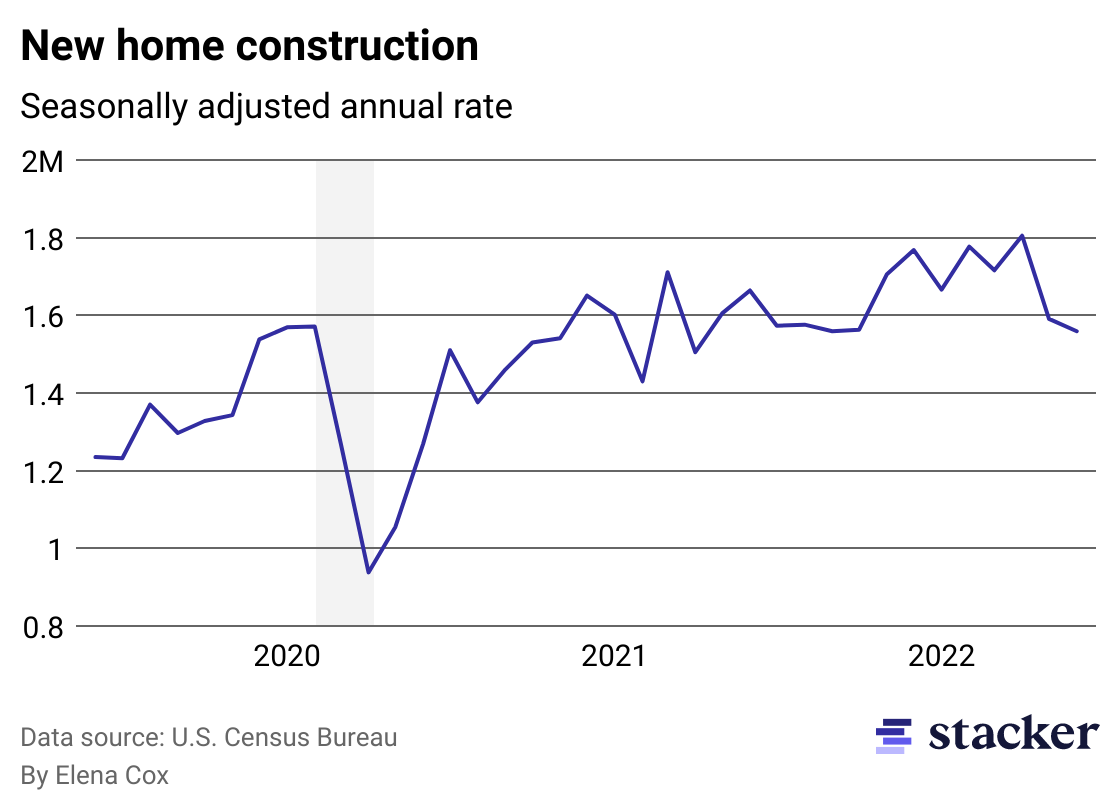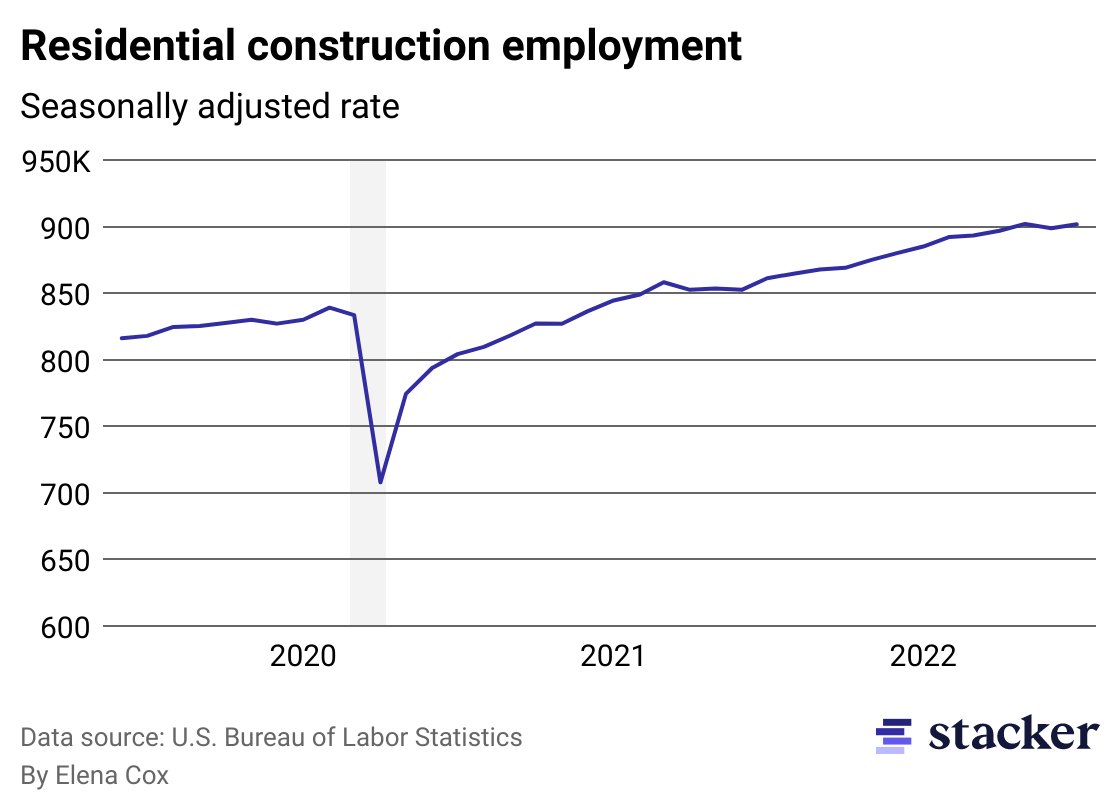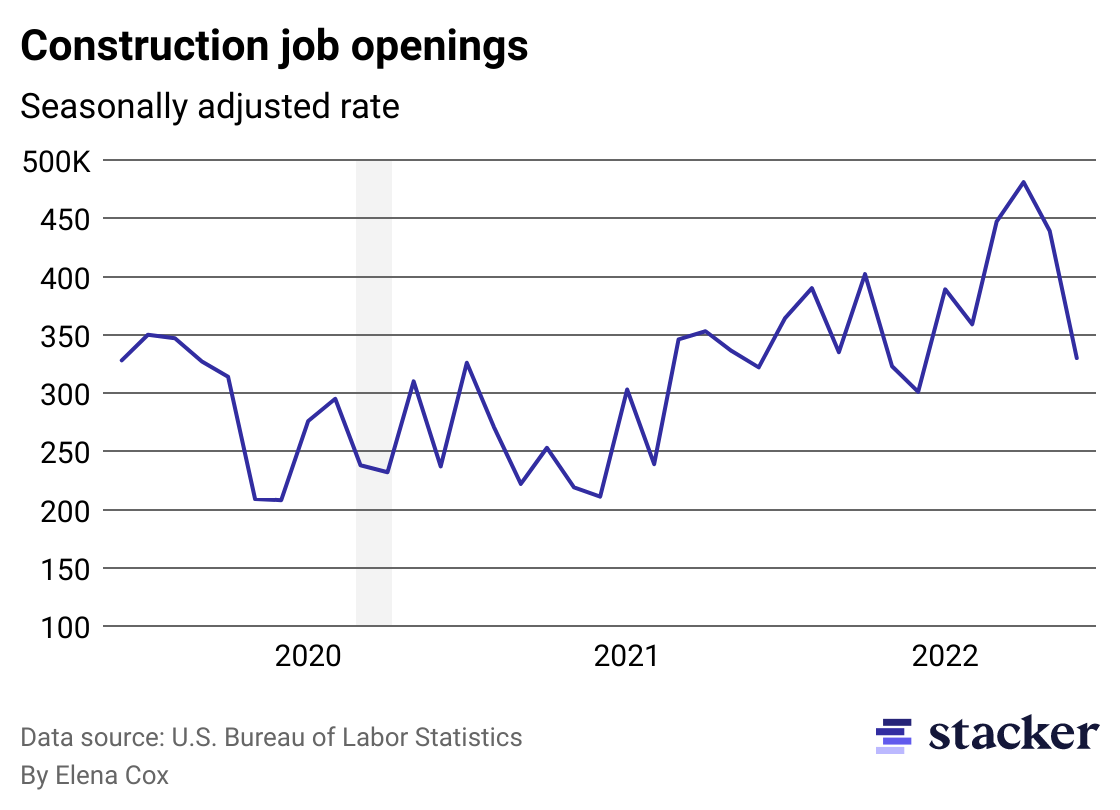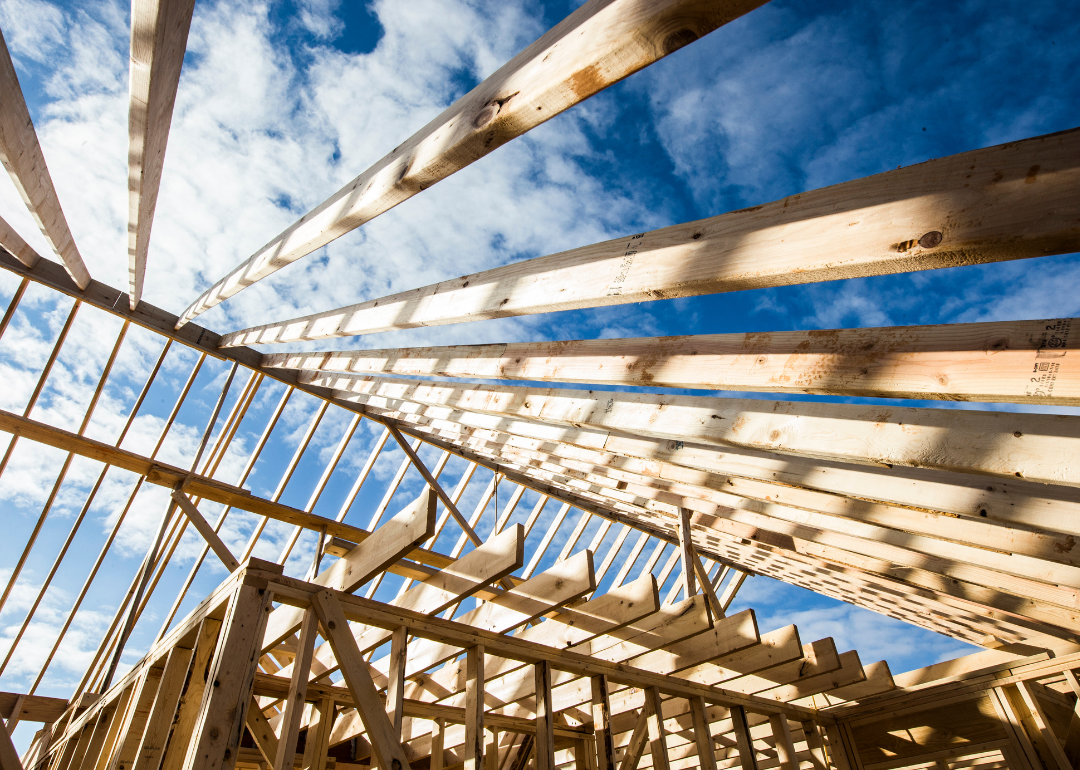America needs more homes, so why are builders cutting back?
Canva
America needs more homes, so why are builders cutting back?
A new home being framed with a blue sky overhead.
The U.S. is short nearly 4 million homes, according to an analysis published in May 2021 by the Federal Home Loan Mortgage Corporation, commonly known as Freddie Mac. New construction was put on pause during the first couple of months of the COVID-19 pandemic, when large parts of the American economy shut down. While the number of new homes being built has rebounded since then, things began to slow in May 2022. Bedeviling the industry are rising mortgage rates—driven up by the Federal Reserve’s efforts to combat inflation—supply-chain issues, and the rising costs of materials.
The number of employed residential construction workers has increased and surpassed pre-pandemic levels, but remains below its peak before the 2008 housing crisis. The Home Builders Institute also points to a lack of skilled workers—hundreds of thousands more workers are needed to keep up with demand.
Housing prices for existing homes continue to rise, though at a slower rate, according to the National Association of Realtors. In July 2022, the median price rose 10.8% from one year prior to $403,800. But that is $10,000 less than the previous month’s record high of $413,800. Sales of existing homes have dropped for the sixth straight month, down 5.9% from June and 20.2% from July 2021.
Stacker examined data from the Census Bureau and the Bureau of Labor Statistics to take a closer look at what’s happening in the residential construction industry.
You may also like: How much the typical home cost in your state in 1950
![]()

Stacker
Construction of new homes has slowed
Line chart showing change in rate of new home construction since 2019
It isn’t surprising that new home construction has slowed. Home builders’ confidence in the market for new single-family homes dropped to its lowest level since June 2020, according to a poll conducted by the National Association of Home Builders. The findings reflect the effects of high inflation and slow economic growth, which coupled with high home prices are making it difficult for many Americans to buy.
Low mortgage rates during the coronavirus pandemic sparked a sharp increase in home prices, which by March 2022 had risen 20.6% from the year before. It has been more than 35 years since year-to-year home prices have changed this much, according to the S&P CoreLogic Case-Shiller U.S. National Home Price Index. Mortgage rates have also jumped from below 3% to more than 6% as the Federal Reserve fights inflation. Builders fear that with all of these challenges, interested homeowners won’t be able to purchase newly built homes.

Stacker
Home construction employment plateaued after rebounding from the 2020 low
Line chart showing change in rate of residential construction employment since 2019
A lack of skilled labor is holding back additional home construction, according to the Home Builders Institute. Construction in late 2020 helped to lead the recovery of an economy battered by the pandemic, but the number of homes built lagged behind sales—a situation that was worsened by supply-chain delays. To add to the supply, more workers must be recruited and trained, the HBI says. Some additional 740,000 workers are needed each year through 2024 to meet demand.

Stacker
Construction job openings shrink
Line chart showing rate of construction job openings since 2019
The number of job openings in the construction industry plummeted in June 2022. There were 71,000 fewer openings compared to the month before, according to the Bureau of Labor Statistics’ monthly Job Opening and Labor Turnover Survey. Construction officials attributed the drop to rising interest rates and growing pessimism about the market. Throughout the industry, there were 334,000 job openings in June, which was still 13,000 more than in June 2021.
Construction workers are also quitting their jobs at a faster rate than they are being laid off or let go—a trend that has existed for sixteen consecutive months. Overall on a year-over-year basis, the construction industry still added 311,000 jobs, a 4.2% increase.
Canva
Contract cancellations on new homes were lower in 2021, but have since gone up
Beautiful new 2 story home with sold sign in yard.
The rate of cancellations of contracts for new homes was low, below 10% for the 13 months leading up to August 2021, according to the Burns Home Builder Survey. Only four builders had reported cancellations of 35% or more, the report said. Buyers had little incentive to cancel because they faced few existing homes for sale and long waits for new homes. Builders could quickly sell homes at higher prices.
Cancellations on existing homes rose in June 2022 to about 15%, the highest rate since the beginning of the COVID-19 pandemic, according to Redfin. Higher interest rates and rising inflation were likely to blame for this increase.

